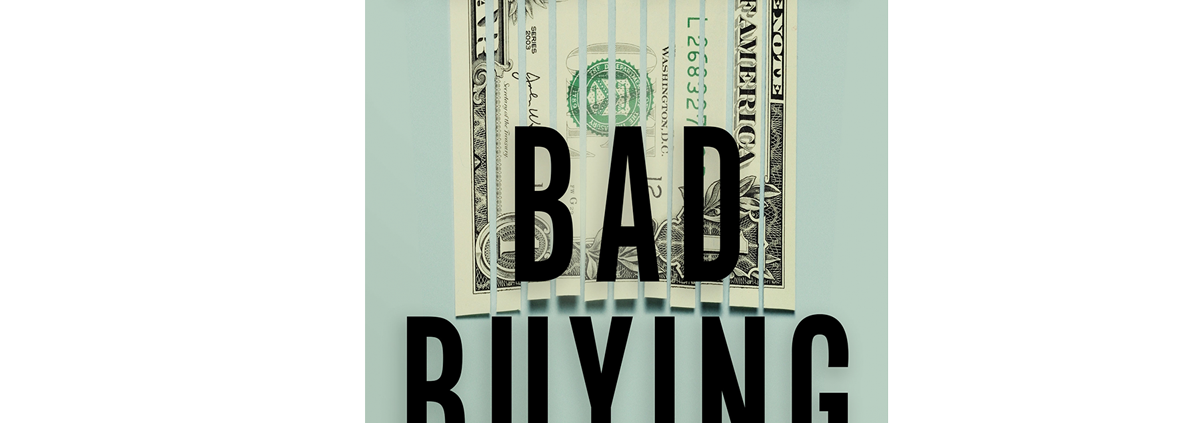Welcome to Bad Buying
Organisations waste time, money and resources buying goods and services they don’t really need, or they buy the wrong products, or pay more than they should. Sometimes they don’t even receive anything in return for their cash, when we look at the most extreme cases of incompetence or fraud.
In businesses or government bodies of all shapes and sizes around the world, money is being lost, wasted, spent inappropriately, defrauded or stolen. What is the cause of this epidemic? Let’s just call it Bad Buying, because at its simplest, that’s what it is.
These issues are truly global, and no industry or country is immune from bad buying; it exists in every country in the world, and in almost every organisation. When Kentucky Fried Chicken runs out of chicken, to the horror of its customers, or a firm such as Skandia pays large sums of money to fraudsters through invoice mis-direction, we can see the result of bad buying practices or processes.
An estimate in 2012 suggested that all the businesses in the world had a combined revenue of $64 trillion. Increase that by 20% to allow conservatively for growth and inflation since then, which gets us to $77 trillion. Lets say conservatively that 50% of that is used to buy from other organisations. That gives some $38 trillion of “buying spend”. It would take an economist to determine exactly what the effect would be if that expenditure could be executed more effectively and efficiently. But clearly, even a small “saving” of a couple of percent on that huge number would bring major benefits to organisations and would improve the overall efficiency of the global economy.
A recent estimate puts the total global public sector procurement spend at $13 trillion. A 5% improvement in the value obtained from this money would release another $650 billion every year. That is money that could be used by governments to alleviate hunger, cure diseases, or improve education in the developing world. And 5% is not unrealistic, given the scale of fraud and corruption in many countries, as well as the opportunities from improving conventional buying performance.
Given just how much money is being spent with suppliers, it is perhaps not surprising that it goes wrong occasionally. But sometimes it goes VERY wrong. In fact, at times it can bankrupt the company, or in the case of government, can lead to political turmoil, front-page news or even revolutions and resignations. So with this website, we aim to highlight the stories that show how and why organisations, public and private, waste billions through bad buying. We will look at cases where it is down to simple incompetence – laziness, a lack of knowledge, understanding or information – but the end result will have a cost to the organisation, sometimes a significant one.
Occasionally, bad buying has darker, criminal motivations. Ranging from the clerk who creates a fictitious company as a “supplier” and channels a few thousand into their own bank account, to huge multinational scandals that have led to Prime Ministers, admirals or CEOs languishing in prison, we will uncover the fraud and corruption at the heart of many buying scandals. And of course, with a more positive intent, we will look at how you can avoid bad buying, and the principles, processes, technology and skills that will reduce your own risk of buying failure.
We hope our readers will contribute, with your own stories of bad (and good) buying, and above all, we hope you enjoy the Bad Buying website, and find it useful, informative and stimulating! And watch out for the book, to be published in October 2020 by Penguin Business, titled “Bad Buying – How organisation waste billions through failure, fraud and f*ck-ups”.



Leave a Reply
Want to join the discussion?Feel free to contribute!